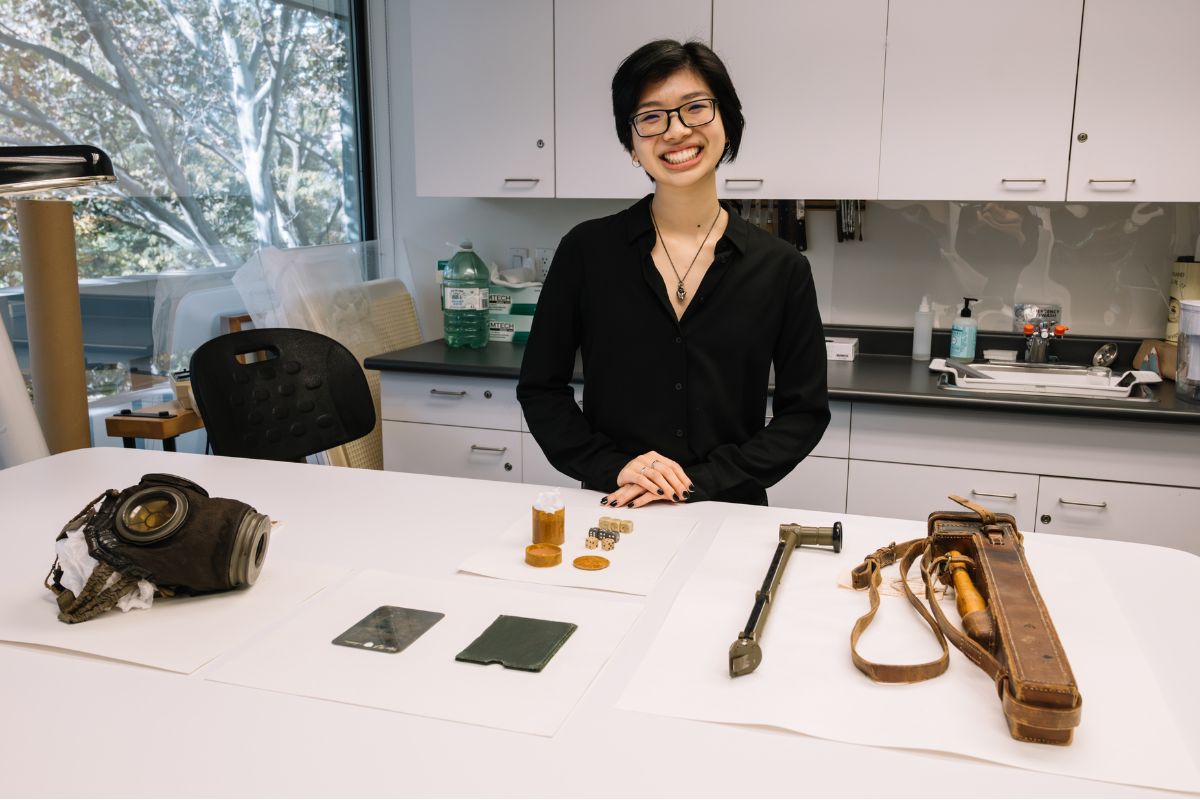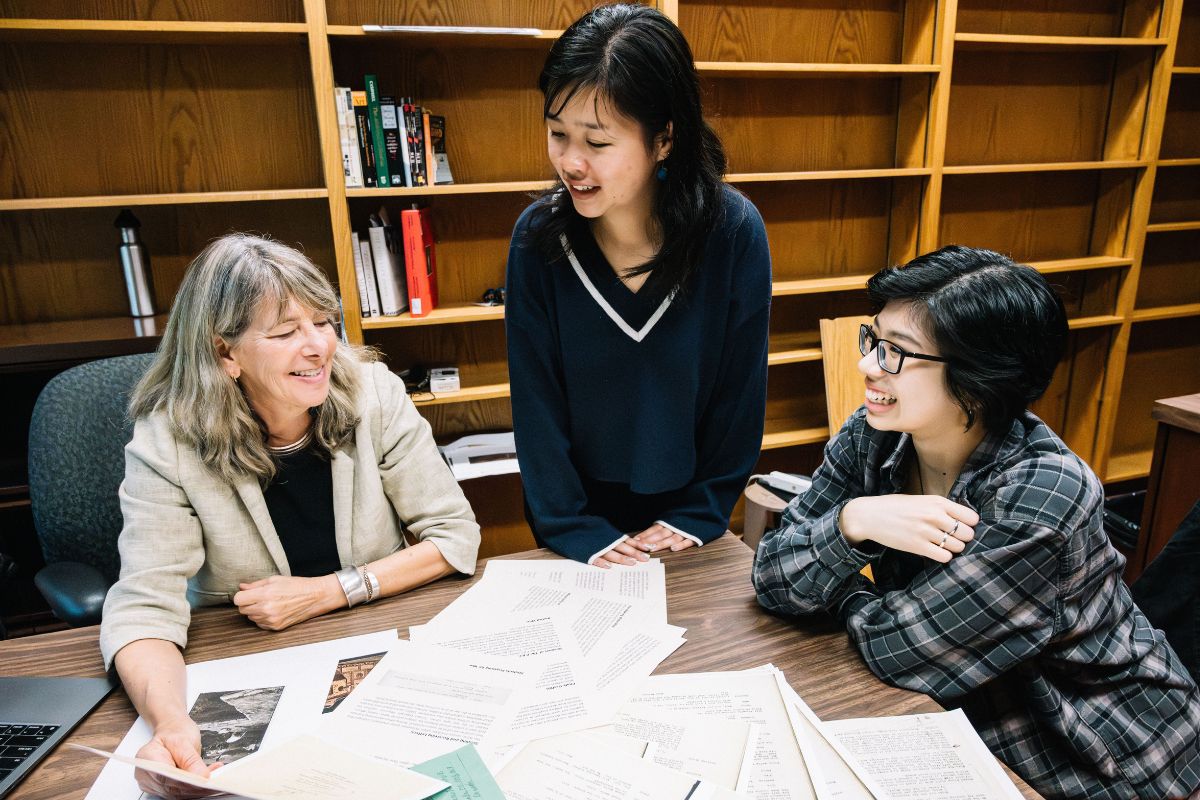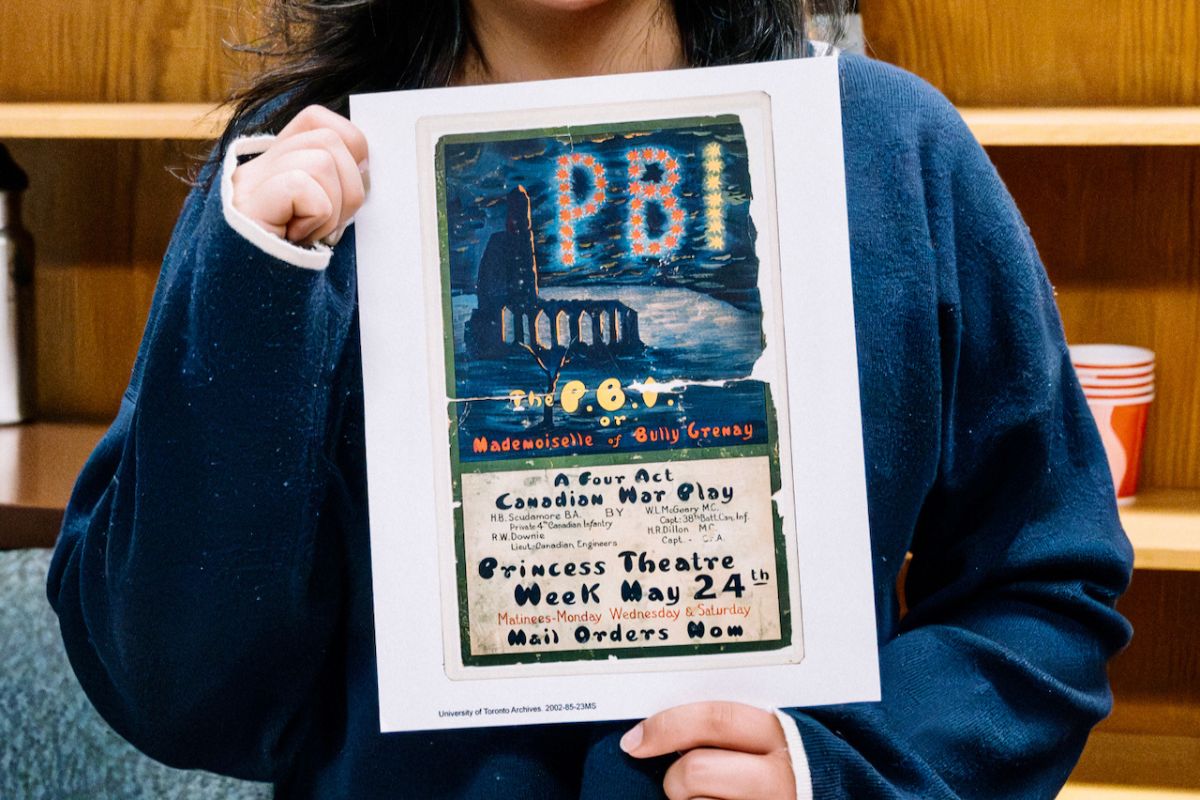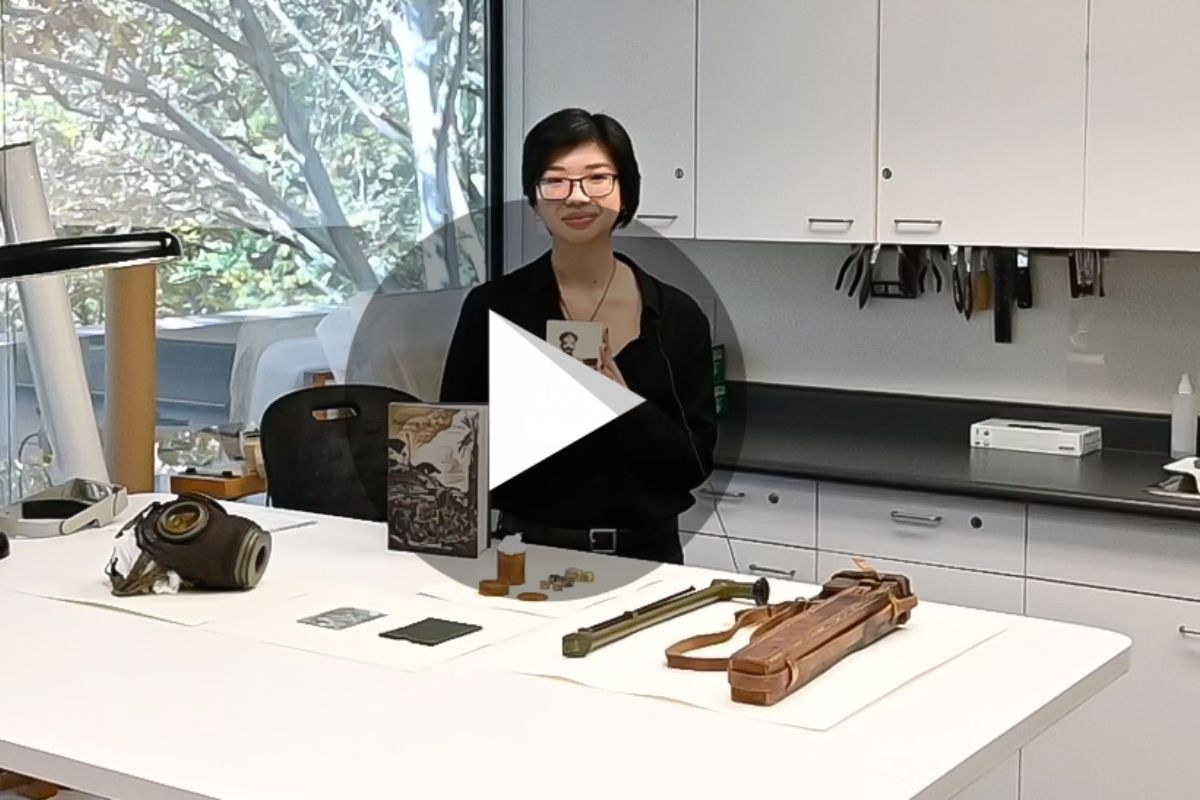WWI Artifacts Exhibit ‘Reliving the Trenches’ Coming to Pratt Library

Eunice Der, a student in Victoria College’s Material Culture and Semiotics minor program, is a co-curator of a forthcoming display of First World War artifacts at the E.J. Pratt Library. (Photos by Will Dang)
By Joe Howell
A new exhibit of artifacts from the First World War called “Reliving the Trenches: Materiality, Memory and the Military” opens in the foyer of Victoria University’s E.J. Pratt Library on Remembrance Day (Monday, Nov. 11).
Cathie Sutton, an assistant professor in Victoria College’s Material Culture and Semiotics minor program, and several of her students have spent months curating the display of items from the E.J. Pratt Library Special Collections, the Victoria University Archives and on loan from the Royal Canadian Military Institute.
“The curator of the Royal Canadian Military Institute is my former student,” said Sutton. “So for the past couple of years I’ve had current students in the material culture program intern there: cataloging artifacts, doing outreach for public engagement, building exhibits. Their tremendous work first got me interested in the trenches.”

Professor Sutton and two of her student curators, Emily Fan and Eunice Der, discuss items to feature in their display.
The inspiration for the forthcoming exhibit at Pratt also came from a play first staged at Hart House Theatre in 1920 called P.B.I., short for Poor Bloody Infantry. The play was written and performed entirely by University of Toronto students who had served in the war and returned from the front lines to finish their studies.
“Everyone who was at Vic during the war participated in the war effort,” said Sutton. “Students moved out of Burwash so it could become a military training ground.”
Audience members, almost all of whom had been touched by the conflict, responded passionately to the veterans’ production.
“The play was a smash hit,” said Sutton. “It captured the horror of life in the trenches.”

A student curator holds a playbill from P.B.I., which went on tour around Ontario after its successful run at Hart House Theatre.
Most of the artifacts displayed at Pratt are similar to ones that would have been used in the original performances of P.B.I., said Sutton.
“During the play there were often times when the actors would yell to each other: ‘respirators on!’, and everyone donned their gas masks. These masks came from the students themselves, who brought them back from the front as souvenirs.”
The prevalence of masks in the play makes sense, since gas was weaponized for the first time during the First World War. The same is true of periscopes, which let soldiers see out of the trenches without exposing themselves to fire.
But P.B.I. also gave new meaning to considerably more mundane objects, which were transformed on stage into touchstones that let the audience experience or remember the brutal conflict. Take the small mirror included in the exhibit: infantry members were allowed precious few personal items when they went to the front lines, and shaving mirrors were a popular choice.
“Hygiene was very important during the war,” explained Sutton. “Even though they were in damp, rat-infested trenches filled with barbed wire, they still had to shave. This is actually in the play: when the soldiers finally emerge from the trenches, they’re scolded by their superiors for not being clean-shaven.”

Watch the video to hear about the exhibit from Vic student Eunice Der.
“Reliving the Trenches” will also feature items from various collections housed at Pratt and chosen by Sutton’s students, who spent the summer going through diaries, photographs, postcards and other physical reminders of the war.
“They found things like mothers writing to their sons to ask, ‘Are your socks wet? Did you bring your boots?,’” said Sutton.
The Material Culture and Semiotics minor is about more than just archeological artifacts, she noted.
“We look at all the ways in which objects shape all aspects of our lives, in both historical and contemporary contexts,” said Sutton. “The program has students who are in book and media studies, we have students who are art historians—we even have students who are business majors. The courses are of interest to people studying all kinds of disciplines.”
“Reliving the Trenches: Materiality, Memory and the Military” opens in the foyer of the E.J. Pratt Library at 1 p.m. on Monday, Nov. 11. Attendance is free and curators will be there to speak about the objects on display until 3 p.m.
Interested in learning more about the Material Culture and Semiotics minor at Victoria College? Visit here.
